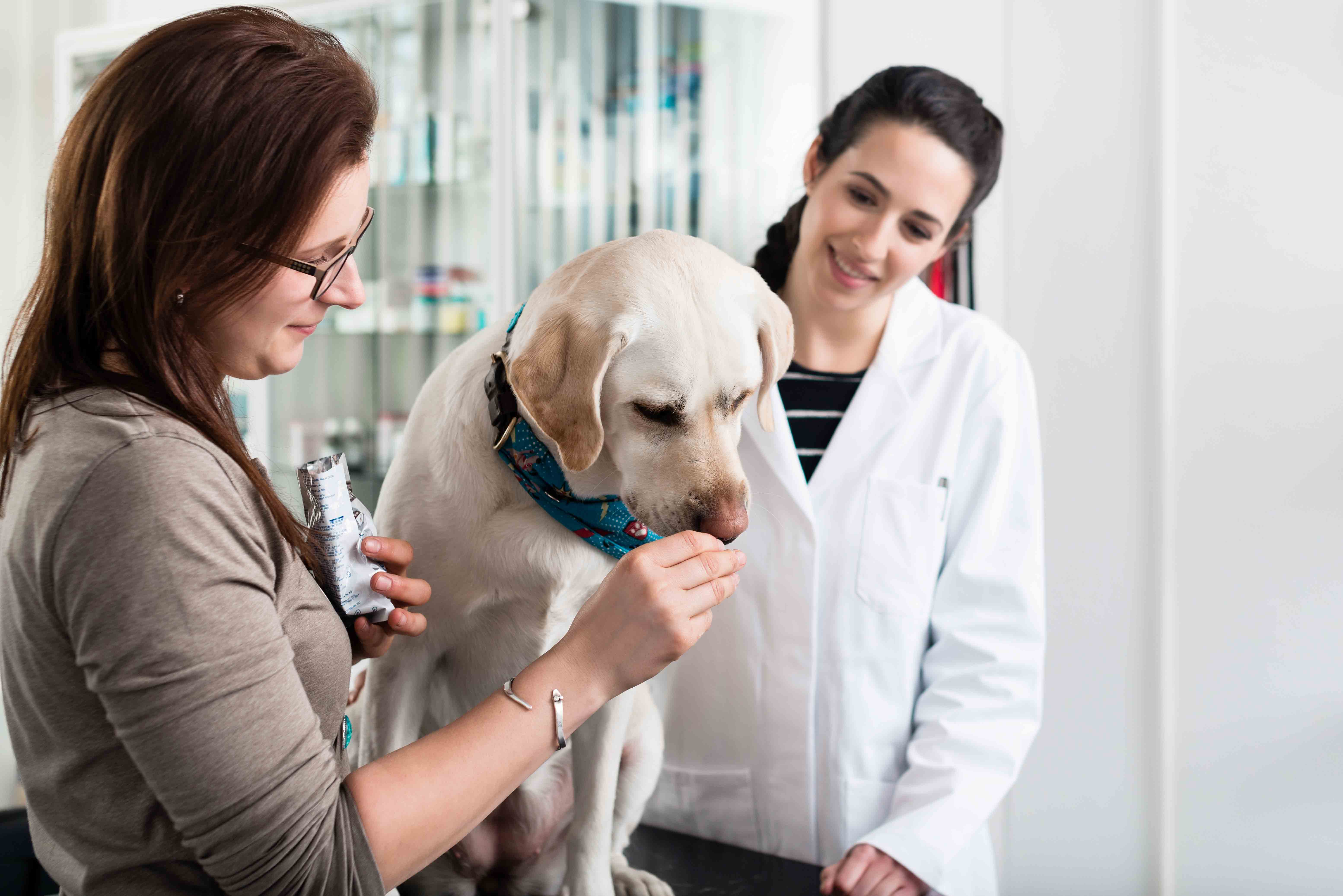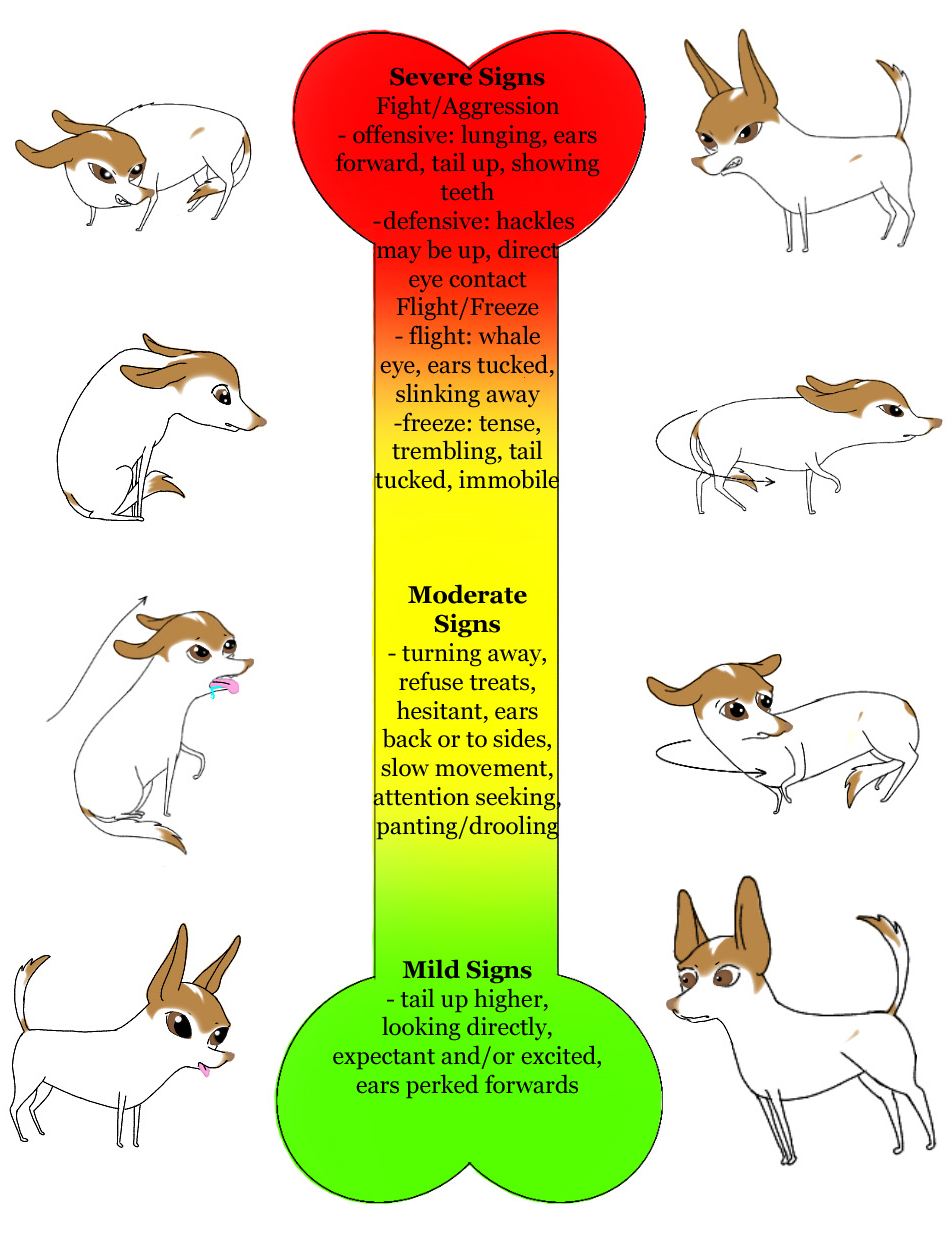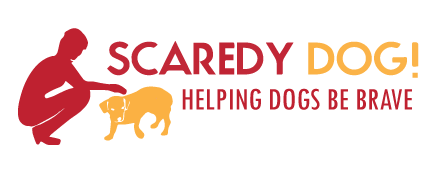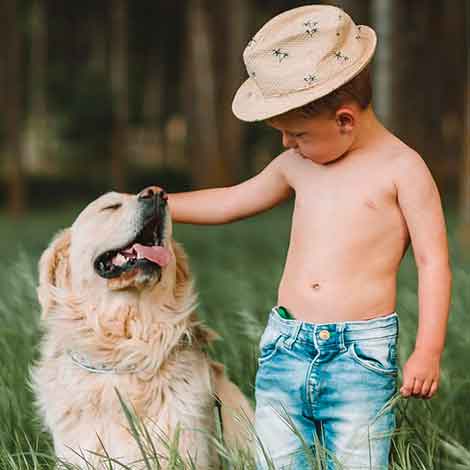Taking Your Scaredy Dog To The Vet

How do I take my Scaredy Dog to the vet?
Veterinary offices are one of the biggest problems for dogs with fear-based behavior problems. They are subjected to unpleasant, sometimes painful, practices without their consent. If they struggle, they are restrained. It’s no wonder each time they go to the vet, their fear worsens! A lot of this guide depends on where your dog gets nervous. See the chart below on the FAS scale for detailed information).
Start with FAS signs of 0-1 or 1 until your dog is calm with the first step before progressing. This may mean opening the car door, giving your dog a handful of high-value treats, closing the door, and going back in the house. If that’s when your dog starts getting nervous, that’s ok! Your scaredy dog sets the pace for any training you do. If you are unsure of anything in this guide, have trouble recognizing your dog’s signs of stress, or your dog fear-bites or lashes out, make sure to consult with a professional trainer or behaviorist.

Getting in the car and driving:
If your dog only gets in the car for a vet visit or other scary things, your dog may get nervous during car rides. Act like you’re going to take a ride but then change your mind, giving high value treats the whole time. Our Training Guide on Training Your Scaredy Dog for a Car Ride is a great resource to learn more about how to prepare your scaredy dog.
Seeing the vet:
When your dog can remain calm in the waiting room, set up an appointment with your vet. Go into the waiting room, have the receptionists give lots of treats and show you into a room, and then wait in there. Give your dog treats the whole time you wait (cut your treats into tiny pieces so that your dog doesn’t get sick). When the vet comes in, have the vet give lots of treats and praise, and then leave. If your dog doesn’t like to be examined, here are some cues to teach your dog in advance.
-
Hand target:
Teaching your dog to touch your hand or follow your hand has immeasurable applications. A few of which is to lead your dog onto a scale or to jump up onto the examination table. This is also good for positioning your dog so the vet can examine him.
-
Chin target:
Having your dog trained to rest his head in your hand is a helpful distraction to keep your dog distracted and still while the vet examines him. An alternative is to just slowly feed him treats.
-
Settle On Your Mat:
This is a great exercise to keep your dog calm anywhere scary. If your train your dog to associate lying on his mat with treats and good things, you can now bring his mat anywhere scary to help calm him, like a doggie security blanket. Just lay the mat down in the waiting room and have him settle on it while you wait.
-
Name the Body Parts:
Handling your dog teaches him to enjoy being touched. Giving each body part a name lets your dog know in advance what you’re going to be touching so that nothing catches him off guard. Say ‘Eyes’, then look in your dog’s eyes and treat him. Next say “Ear”, then look in your dog’s ear and treat him. Say “Tail”, then gently hold his tail and treat him. Do this with all of the body parts.
-
Hold Still:
Hugging your dog and then giving good treats for not struggling prepares him to accept being restrained if need be. Being used to being restrained and holding still makes the vet’s job considerably easier.
-
Shaping blood draws:
If your dog has a chronic health problem and is often at the vet for the same procedure such as blood draws, it’s easier for everyone if you train your dog to accept it. You can modify Hold Still by holding your dog’s head to get blood from the neck, or if your dog often gets IVs, you can train him to press his paw against your arm and hold it there.
Management Techniques
Management techniques at the vet will not help your dog be less scared in the future. In fact, it may cause your dog to be more scared. But you don’t have the time to train and your dog needs to see the vet now, here are some tips for managing your dog at the vet.
-
Distract your dog:
Bring high value treats and distract your dog in the waiting room and while waiting for the vet. Go through your dog’s repertoire of tricks and reward him with the treats. If your dog is too distracted or nervous to do tricks, just feed him the treats slowly, one after another. When your dog is being examined by the vet, you can smear peanut butter on the examination table. This will distract your dog while being examined. If your dog is too distracted or nervous to take high value treats, read on.
-
Sit and talk to them:
Get on the floor with your dog, or let your dog up on the chair or your lap. Pet them with long strokes down their back and chest while talking to them in low, soothing tones. You’re not reinforcing the fear behavior like some think – you’re counter conditioning their association to the vet with bad things.
-
Make use of natural anti-anxieties:
Give your dog turkey for breakfast or put a drop of lavender oil on their ear tips. You can also raid the calming aisle of your pet store for calming pheromone sprays, diffusers or collars, and treats*.
-
Bring a towel:
If your small dog is crated, you can use a lavender- or pheromone-infused towel. Use that towel to cover the sides of the crate. A snug sweater or blanket sometimes has a calming effect on dogs, similar to swaddling a baby. You can swaddle your dog in the towel for the calming effect. This has the additional bonus of immobilizing your dog while he’s being examined. Note that being restrained at the vet’s office may increase his fear for next time, but this is an invaluable technique to use in case of an emergency.
Invest in a harness: A harness can save your dog’s neck from injury if he were to panic while on leash.
-
Muzzle your dog*:
Dogs naturally do not like anything on their faces, so muzzle training has to be done slowly and positively so as to not cause any undue stress to your dog. If your dog is injured though, he’s prone to biting. If there’s even the smallest possibility your dog may bite or lash out, please muzzle him for everyone’s safety. Again, this may increase his level of fear the next time he sees the muzzle or goes to the vet, but this is good in case of an emergency. See my guide on muzzle training for more information.
*Clear any training program with your vet before you begin.
Do you want to keep up with our training guides?
For more helpful tips on handling your scaredy dog, please take a look at our Training Guides. We also have our FAQ page and you can also find Scaredy Dog on Facebook.




